In this era of rapid technological advancements, the automotive industry is not one to be left behind. The pursuit of innovation and progression has led the industry to envision a future where the traditional steering wheel becomes obsolete. Through cutting-edge technology and groundbreaking design, a new era of driving experience without the need for manual control is being shaped.
Imagine a world where vehicles effortlessly glide through the roads, guided not by human hands but by intelligent systems that navigate and adapt to the ever-changing environment. This vision of autonomous driving revolutionizes the way we perceive transportation, offering a level of convenience, safety, and efficiency that was once considered a distant dream.
At the forefront of this automotive revolution are advancements in artificial intelligence and sensor technology. The integration of these technologies enables vehicles to perceive their surroundings, make real-time decisions, and react to potential obstacles without any human intervention. This level of autonomy paves the way for a seamless and immersive driving experience, where passengers can relax, work, or simply enjoy the ride.
Furthermore, the absence of a traditional steering wheel opens up a world of possibilities in terms of design and interior space utilization. Without the constraints imposed by a physical wheel, vehicle interiors can be transformed into luxurious and comfortable spaces that resemble mobile living rooms or offices. Passengers can indulge in a variety of activities, whether it's catching up on emails, engaging in video conferencing, or simply unwinding with a book, all while being transported smoothly to their destination.
Revolutionizing the Automotive Industry: Autonomous Vehicles
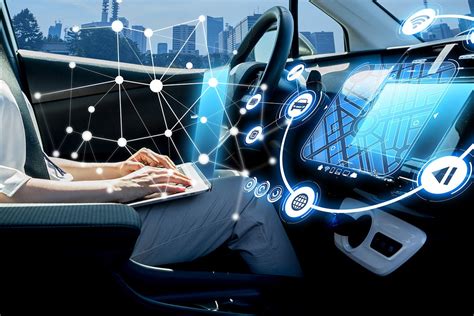
In this section, we will explore how autonomous vehicles are transforming the automotive industry. These innovative vehicles are reshaping the way we travel, eliminating the need for manual steering and redefining the driving experience. Through advanced technology and artificial intelligence, autonomous vehicles are paving the way for a future where cars can navigate, make decisions, and operate independently, without the reliance on human intervention.
- Autonomous vehicles are revolutionizing transportation by introducing a new level of convenience, safety, and efficiency. With their ability to analyze and respond to changing traffic conditions, these vehicles have the potential to drastically reduce accidents, congestion, and emissions. They offer a hands-free experience, freeing up valuable time for passengers to engage in other activities or relax during their journeys.
- One of the key components of autonomous vehicles is their sophisticated sensor systems, which enable them to gather and process vast amounts of data in real time. These sensors include cameras, LiDAR, radar, and GPS, allowing the vehicle to detect obstacles, pedestrians, and traffic signals. By combining this data with complex algorithms, the vehicle can make informed decisions and navigate safely through complex road scenarios.
- The development of autonomous vehicles is not limited to personal cars. Various industries, such as logistics, delivery services, and ride-hailing companies, are also exploring the potential of autonomous vehicles. This technology has the potential to revolutionize the way goods are transported and delivered, making the process more efficient, reliable, and cost-effective.
- However, the widespread adoption of autonomous vehicles comes with its challenges. Safety and trust are paramount concerns, as the technology needs to prove its reliability and ability to navigate unforeseen circumstances. Additionally, there are legal and regulatory hurdles to overcome, as governments and organizations work together to establish guidelines and standards for autonomous driving.
- The future of the automotive industry is undoubtedly being shaped by autonomous vehicles. As the technology continues to advance, we can expect to see more widespread adoption, increased connectivity, and the emergence of new business models centered around autonomous transportation. It is an exciting time for the automotive industry as we witness the transformative potential of autonomous vehicles.
Embracing a Hands-Free Future: The Rise of Self-Driving Cars
In this section, we will explore the phenomenon of the adoption of autonomous vehicles and their impact on the future of transportation. With advancements in technology, self-driving cars are rapidly becoming a reality, revolutionizing the way we perceive and interact with the concept of transportation.
Self-driving cars signify a paradigm shift in the automotive industry, heralding a new era of mobility where traditional notions of driving and control are redefined. The adoption of autonomous vehicles is no longer a futuristic dream but a tangible reality that is being embraced by various industries and societies worldwide.
These transformative vehicles have the potential to provide numerous benefits. They can significantly enhance road safety by reducing human errors and distractions. By eliminating the need for a human driver, self-driving cars can also promote greater accessibility, particularly for individuals with disabilities or limitations. Additionally, the integration of advanced technology and connectivity in autonomous vehicles can lead to increased efficiency in traffic management and decreased traffic congestion.
Nevertheless, the wide-scale adoption of self-driving cars also brings forth challenges and considerations. Ethical questions arise, such as how autonomous vehicles should prioritize and respond to potentially life-threatening scenarios. Moreover, the transition to a hands-free future will require significant changes in infrastructure, regulations, and public perception.
The rise of self-driving cars is not just a technological innovation; it represents a transformative shift in society's relationship with transportation. The potential benefits and challenges presented by autonomous vehicles necessitate an interdisciplinary and collaborative approach, involving scientists, engineers, policymakers, and the public, in order to shape a hands-free future that prioritizes safety, efficiency, and ethical decision-making.
In conclusion, the ascent of self-driving cars marks the dawn of a new era in transportation. The embrace of autonomy in vehicles promises a future characterized by increased safety, accessibility, and efficiency. However, the successful integration of self-driving cars requires careful consideration of the ethical, regulatory, and infrastructural aspects. As we push towards a hands-free future, it is imperative that we embrace this paradigm shift fully, ensuring that innovation is harnessed responsibly and in the best interest of society as a whole.
Overcoming Challenges: Designing Safe and Reliable Autonomous Vehicles
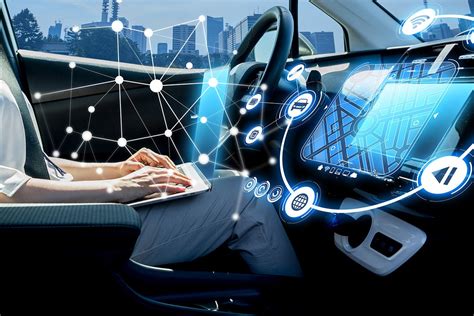
When envisioning the future of transportation, one cannot help but consider the immense potential of autonomous vehicles. These vehicles have the capability to revolutionize the way we travel, offering increased safety, efficiency, and convenience. However, the development of autonomous vehicles comes with its fair share of challenges, particularly in ensuring their safety and reliability in real-world scenarios.
Addressing Safety Concerns: One of the primary hurdles in designing autonomous vehicles lies in mitigating safety concerns. Without a steering wheel, human intervention is no longer possible, which necessitates the creation of advanced and robust safety systems. Engineers and designers are tasked with developing cutting-edge technologies that can accurately perceive and respond to a multitude of complex and unpredictable situations on the road.
Ensuring Reliability: Building reliable autonomous vehicles is crucial for their widespread adoption. Reliability encompasses not only the vehicles' mechanical components but also their software systems. Engineers must meticulously assess every aspect of the vehicle's design to eliminate any potential points of failure, and ensure that the vehicle can perform fluently and flawlessly in various weather conditions and challenging terrains.
Integrating AI and Machine Learning: The success of autonomous vehicles heavily relies on artificial intelligence (AI) and machine learning algorithms. It is essential to continuously improve and refine these algorithms to enhance the vehicles' ability to make split-second decisions, adapt to changing environments, and learn from real-world data. Ensuring the effectiveness of AI systems is crucial in maintaining the overall safety and reliability of autonomous vehicles.
Meeting Regulatory Standards: The development of autonomous vehicles also entails navigating a complex web of regulatory standards and requirements. Designers and manufacturers need to work closely with regulatory bodies to address safety concerns, privacy issues, and liability considerations. Striking a balance between innovation and compliance is essential to ensure the successful integration of autonomous vehicles into existing transportation systems.
Testing and Validation: Designing safe and reliable autonomous vehicles requires extensive testing and validation processes. Engineers must conduct rigorous tests in simulated environments as well as real-world scenarios to identify any flaws or weaknesses in the vehicles' performance. The testing phase allows for fine-tuning and refinement, ensuring that the vehicles are prepared to handle the challenges of autonomous driving.
In conclusion, the design of safe and reliable autonomous vehicles presents multiple challenges that need to be overcome. Addressing safety concerns, ensuring reliability, integrating AI and machine learning, meeting regulatory standards, and conducting thorough testing and validation are crucial steps in realizing a future where autonomous vehicles play a prominent role in transportation.
The Power of Artificial Intelligence: Enabling Autonomous Vehicles
Advances in artificial intelligence (AI) technology have revolutionized the automotive industry, particularly in the development of autonomous vehicles. AI plays a pivotal role in enabling these vehicles to operate and navigate without the need for human intervention.
Artificial intelligence empowers autonomous vehicles with the ability to perceive, reason, and make informed decisions in real-time. Through the integration of powerful AI algorithms and sensors, these vehicles are able to analyze their surroundings, detect obstacles and pedestrians, and adapt their driving behavior accordingly.
One of the key components of AI technology in autonomous vehicles is machine learning. By training vehicle systems on vast amounts of data, they become proficient at recognizing patterns and adapting their behavior based on different scenarios encountered on the road. This ability allows autonomous vehicles to continuously improve their driving skills and make more accurate decisions over time.
The power of AI is further enhanced by the integration of deep learning techniques. Neural networks within autonomous vehicle systems have the remarkable ability to learn and recognize complex patterns, enabling them to accurately interpret various visual and auditory cues from the environment. This enables the vehicles to make quick decisions and respond to dynamic road conditions effectively.
In addition to perception and decision-making, AI also plays a crucial role in the communication and connectivity aspects of autonomous vehicles. Through the utilization of advanced AI algorithms, these vehicles can communicate with each other and with other traffic infrastructure elements, such as traffic lights and road signs, to ensure smooth and efficient traffic flow.
Furthermore, the power of AI in autonomous vehicles extends beyond just driving capabilities. It also encompasses advanced features such as voice recognition, natural language processing, and intelligent infotainment systems, enhancing the overall driving experience for passengers.
In conclusion, the integration of AI technology has empowered autonomous vehicles with the ability to operate and navigate independently. Through the utilization of machine learning and deep learning techniques, these vehicles can perceive their environment, make informed decisions, and adapt to changing road conditions. With further advancements in AI, autonomous vehicles hold immense potential to transform the future of transportation, making our roads safer, more efficient, and ultimately revolutionizing the driving experience for everyone.
A Sneak Peek into the Future: Anticipating the Potential of Autonomous Vehicles
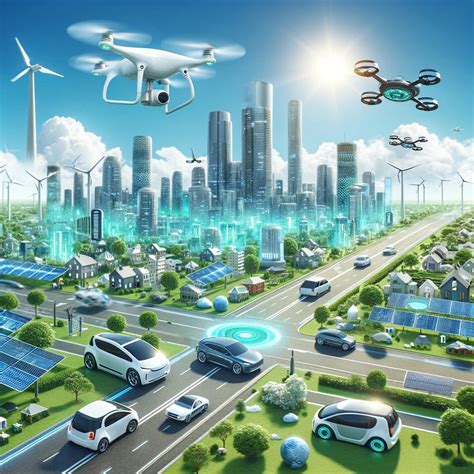
With the rapid advancements in technology, the world is on the brink of a revolutionary transformation in transportation. Self-driving cars, equipped with state-of-the-art artificial intelligence and automation, promise to redefine the way we travel. As we peer into the future, it's fascinating to contemplate the countless possibilities and advancements that lie ahead in the realm of autonomous vehicles.
Imagine a world where cars effortlessly navigate through traffic, communicating with one another to optimize routes and avoid congestion. In this future, passengers are liberated from the responsibilities of piloting a vehicle, allowing them to engage in other productive or leisure activities during their journeys. This paradigm shift has the potential to enhance safety, productivity, and overall efficiency in our daily lives.
Moreover, self-driving cars have the potential to significantly reduce accidents caused by human error, ultimately making our roads safer. With advanced sensors and algorithms, these vehicles can constantly monitor their surroundings, anticipate potential hazards, and execute real-time decisions with a level of precision far beyond human capabilities. The era of autonomous driving brings the promise of a future where traffic collisions are minimized, and road safety is greatly enhanced.
Not only will self-driving cars impact individual motorists, but they also have the potential to transform the transportation industry. With the advent of ride-sharing services and autonomous taxi fleets, car ownership may become less prevalent, paving the way for a more sustainable and efficient system. The integration of autonomous vehicles into public transportation can revolutionize the way cities operate, improving accessibility and reducing congestion, air pollution, and commuting times.
However, as with any emerging technology, there are challenges and considerations to overcome. Legal and ethical dilemmas, concerns over data privacy and cybersecurity, and the transition process from conventional vehicles to autonomous ones are just a few aspects that will require careful attention and regulation. Yet, despite these hurdles, the future of self-driving cars holds immense potential for transforming the way we live, commute, and interact with our urban environments.
In conclusion, the future of autonomous vehicles presents a tantalizing glimpse into a world where transportation is safer, more efficient, and environmentally friendly. As technology continues to advance, we can look forward to a future in which self-driving cars become an integral part of our everyday lives, ushering in a new era of mobility and connectivity.
Redefining Mobility: The Potential Impact of Autonomous Vehicles
In this section, we will explore the profound changes that autonomous vehicles can bring to the concept of mobility. We will examine the potential implications and benefits, as well as the challenges that may arise in this emerging era of transportation.
| Revolutionizing Transportation |
| Autonomous vehicles have the capacity to revolutionize the way people move from one place to another. The introduction of self-driving cars, buses, and even trucks has the potential to redefine mobility as we know it. Through advanced sensing and computing technologies, these vehicles eliminate the need for human drivers and introduce a new level of convenience and efficiency to transportation. |
| Enhanced Safety and Efficiency |
| One of the most significant impacts of autonomous vehicles is the potential to enhance safety on the roads. With advanced sensors and algorithms, self-driving cars can react faster and more accurately than human drivers, reducing the risk of accidents caused by human error. Additionally, the optimization of driving patterns and traffic flow through autonomous vehicles can lead to increased efficiency and reduced congestion on roadways, benefiting both individuals and society as a whole. |
| Transforming Urban Spaces |
| The widespread adoption of autonomous vehicles can also transform the design and utilization of urban spaces. As the need for parking spaces decreases with the rise of shared and self-driving vehicles, cities can repurpose these areas for green spaces, pedestrian zones, or the development of new infrastructure. This shift has the potential to create more sustainable and livable urban environments, promoting healthier lifestyles and reducing pollution. |
While the potential benefits of autonomous vehicles are undoubtedly promising, there are also challenges that must be addressed. Concerns regarding cybersecurity, ethical decision-making algorithms, and the legal framework surrounding self-driving vehicles need careful consideration. Nevertheless, the future of mobility is undeniably being reshaped by the ongoing advancements in autonomous vehicle technology, marking a new era in transportation.
From Passenger to Passenger: The Human Experience in Autonomous Cars
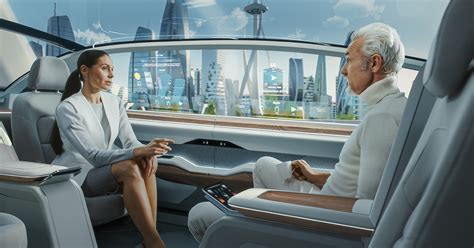
In the world of autonomous transportation, the role of the passenger has undergone a significant transformation. Without the need for a steering wheel or traditional driving controls, passengers are no longer just observers but active participants in the human experience within autonomous cars.
As passengers relinquish control to the artificial intelligence that governs their journey, a new level of connection with the vehicle and surrounding environment emerges. No longer burdened by the need to navigate, passengers can immerse themselves in the sights, sounds, and sensations of the journey.
With the responsibility of driving lifted from their shoulders, passengers can fully focus on engaging with fellow passengers and exploring opportunities for connection and interaction. Autonomous cars become dynamic spaces for communication, collaboration, and shared experiences, creating a social fabric that transcends the boundaries of traditional transportation.
Within the confines of an autonomous vehicle, passengers have the freedom to engage in various activities, whether it be work, leisure, or simply relaxation. This newfound flexibility enables them to make the most of their time, blurring the line between commuting and personal time. The journey itself becomes a seamless part of one's daily routine, providing an opportunity for personal growth and enrichment.
The evolution of autonomous cars also presents the possibility of integrating smart technologies that further enhance the human experience. From personalized entertainment systems to augmented reality interfaces, passengers can tailor their journey to their individual preferences, creating a bespoke environment that caters to their needs and desires.
While the introduction of autonomous cars brings about numerous benefits and exciting possibilities, it is vital to address the inherent challenges that may arise. The human experience within autonomous vehicles must be carefully designed to ensure safety, comfort, and a sense of control, striking the delicate balance between human involvement and autonomous operation.
As autonomous technology continues to advance, the human experience within these vehicles will undoubtedly evolve further. From passenger to passenger, the possibilities for connection, engagement, and personal growth are vast, reshaping the way we perceive and experience transportation in the modern world.
Exploring new frontiers: Expanding the horizons of autonomous transportation
In this section, we delve into the exciting realm of autonomous transportation and its potential to transform not only the way we travel on land, but also in the skies. As technology advances and self-driving vehicles become increasingly sophisticated, the possibilities for autonomous transportation are expanding beyond the confines of traditional roadways. With the integration of cutting-edge systems and advancements in artificial intelligence, we are witnessing a new era of transport that extends its reach to the skies.
Autonomous transportation, once mainly associated with self-driving cars on the roads, is now venturing into the realm of aviation. The application of autonomous technology in aviation opens up a wide range of possibilities for efficient and safe air travel. From cargo deliveries to personal transportation, autonomous aerial vehicles are being developed and tested to navigate the skies with precision and reliability.
- Unmanned aerial vehicles (UAVs), commonly referred to as drones, are at the forefront of autonomous transportation in the skies. These agile aircraft are capable of various tasks, ranging from aerial photography and surveying to emergency response and package delivery.
- With the ability to operate independently, autonomous aerial taxis are revolutionizing urban transportation. Passengers can soon hail a self-flying taxi, eliminating the need for congested roads and offering a faster and more efficient means of travel.
- Autonomous cargo planes are transforming the logistics industry by streamlining delivery processes. These unmanned aircraft can transport goods across long distances with reduced costs and increased safety, driving advancements in e-commerce and global trade.
The integration of autonomous aerial vehicles alongside their autonomous counterparts on the roads presents new opportunities for seamless and interconnected transportation networks. By combining the strengths of both land and air travel, we can enhance efficiency, reduce congestion, and improve the overall experience of transportation.
As autonomous technology continues to evolve, the boundaries of transportation are expanding, paving the way for a future where self-driving vehicles seamlessly navigate both the roads and the skies, transforming the way we move and explore our world.
The Role of Regulations: Navigating Legal and Ethical Challenges in Autonomous Vehicles
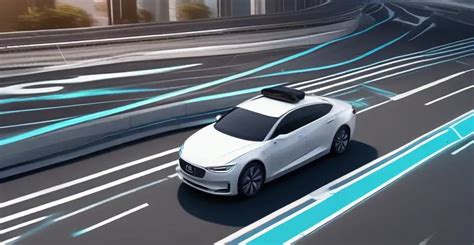
In the exciting world of driverless cars, the absence of steering wheels may seem revolutionary, but it also raises a host of legal and ethical questions. As advancements in autonomous driving technology continue to progress, it becomes increasingly important to address the challenges and concerns surrounding the regulations governing these vehicles.
Navigating Legal Frameworks:
The deployment of autonomous vehicles requires careful consideration of existing legal frameworks. As we envision a future where steering wheels are no longer necessary, it becomes essential to identify and adapt current regulations to accommodate the specific needs and requirements of autonomous driving. This process involves collaborating with lawmakers, policymakers, and experts to establish comprehensive guidelines that ensure the safe operation of these vehicles while addressing potential liabilities.
Ethical Dilemmas:
The rise of autonomous driving also brings forth a myriad of ethical challenges. With human drivers removed from the equation, it becomes crucial to determine how autonomous vehicles should prioritize and make decisions in potentially life-threatening situations. Questions surrounding the allocation of blame in accidents involving autonomous vehicles and the ethical considerations of programming decision-making algorithms must be thoroughly examined and debated.
Public Perception and Acceptance:
Addressing legal and ethical challenges also involves considering public perception and acceptance of autonomous vehicles. Ensuring transparency and fostering public trust are essential elements in encouraging widespread adoption. By engaging in open dialogue and educating the public about the benefits of autonomous driving, we can navigate the legal and ethical hurdles associated with this groundbreaking technology.
The Global Landscape:
Autonomous driving technology transcends geographical boundaries, making it essential to establish a global perspective on regulations. International collaboration and harmonization of laws and standards are vital to facilitate the development and deployment of autonomous vehicles while ensuring consistency in safety measures and ethical considerations.
Shaping the Future: Innovations in Autonomous Vehicle Technology
The world of transportation is undergoing a radical transformation, fueled by groundbreaking advancements in autonomous vehicle technology. As we look towards the future, innovative developments are shaping the way we perceive and interact with vehicles. This article explores some of these advancements, highlighting how they are revolutionizing the concept of driving without human intervention.
Enhanced Safety Measures: One of the key focuses of autonomous vehicle technology is ensuring the safety of passengers and other road users. Through advanced sensor systems, artificial intelligence, and machine learning algorithms, vehicles can detect and respond to potential risks in real-time. These technologies eliminate human error, offering a safer and more reliable mode of transportation.
Efficient Traffic Management: Autonomous vehicles have the potential to optimize traffic flow, reducing congestion and travel times. Through interconnected communication systems, these vehicles can share real-time data and coordinate their movements, adapting to changing road conditions and minimizing traffic bottlenecks. With autonomous vehicles, the dream of a smoother and more efficient commute becomes a reality.
Revolutionizing Accessibility: Autonomous vehicle technology has the power to transform mobility options for individuals with disabilities or limited mobility. By eliminating the need for a steering wheel and pedals, self-driving vehicles can provide a new level of independence and freedom to those who may otherwise face transportation challenges. This innovation opens up endless possibilities for individuals to engage in various activities while on the move.
Environmental Sustainability: The integration of autonomous vehicle technology with electric and hybrid power systems holds immense potential for reducing carbon emissions and promoting environmental sustainability. With the ability to optimize driving patterns and energy consumption, self-driving vehicles can contribute to a cleaner and greener future. The dream of a world with reduced reliance on fossil fuels and a healthier environment is within reach.
Revolutionizing Industries: The impact of autonomous vehicle technology extends far beyond individual transportation. Industries such as delivery and logistics, ride-hailing, and public transportation are set to be revolutionized by the introduction of self-driving vehicles. These advancements have the potential to enhance efficiency, reduce costs, and transform the way goods and services are transported, creating new opportunities for various sectors.
The Road Ahead: As autonomous vehicle technology continues to evolve, the possibilities seem endless. From innovative safety features to efficient traffic management systems, these advancements are reshaping the future of transportation. Embracing autonomous vehicle technology means embracing a world where the boundaries between man and machine blur, leading us towards a future of enhanced mobility, connectivity, and sustainability.
FAQ
What is the article about?
The article discusses the concept of a self-driving car that does not require a steering wheel for operation.
Why do we need a car without a steering wheel?
A car without a steering wheel offers the potential for a fully automated driving experience, where passengers no longer need to control the vehicle and can instead focus on other activities.
Are there any self-driving cars currently available without a steering wheel?
At the moment, there are no fully autonomous vehicles available to consumers without a steering wheel. However, various autonomous car manufacturers are actively working towards developing such technology.
What are the challenges faced in creating a car without a steering wheel?
The main challenges include ensuring the safety and reliability of the autonomous systems, adapting to different traffic conditions and regulations, and addressing the ethical and legal concerns associated with handing complete control to the vehicle.
How would a car without a steering wheel impact transportation systems?
A car without a steering wheel could potentially lead to improved traffic management, increased road safety, and a more efficient and accessible transportation system. However, it would also require significant changes in infrastructure and regulations to fully incorporate these vehicles into existing transportation systems.
What is the article about?
The article is about a new concept of autonomous vehicles that do not require a steering wheel.



